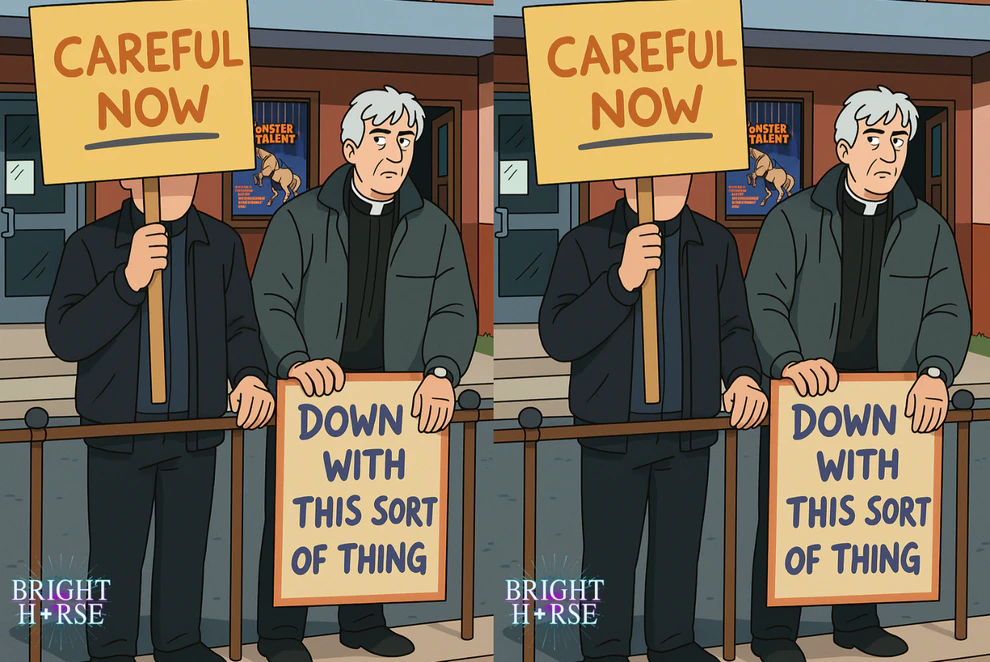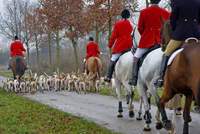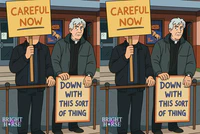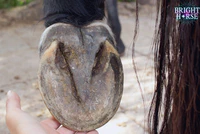Down With This Sort of Thing: Why Flag Waving in Horse Training Doesn’t Work
Flag waving doesn’t work, and I’m not talking about the flag waving we saw across the UK this summer or at football or rugby matches. I mean the flag waving you see in horse training videos online. This has been a major frustration for me since I first came across it in 2019. Why? Because there’s a basic misunderstanding of what’s actually happening in the horse’s learning process, and it keeps getting sold to owners as a neat little “method” that promises to fix all their problems.
Training horses is not simple or a one-size-fits-all “method.” It depends on many things that need to be considered when building a training plan: their natural behaviour (ethology), whether they are healthy (no medical issues or lingering problems that could explain the behaviour), and whether they are in the right state to learn at that moment (not over threshold or too stressed). And of course, you have to understand the exact problem you’re trying to work on. Flag waving ignores all of that in favour of a quick-fix solution. At best it uses two parts of learning theory, but in most cases it applies them clumsily. Done wrong, it doesn’t just fail, it can actually make behaviour worse. And because it looks impressive, flashy, and dramatic on social media, it spreads quickly without people stopping to ask questions.
Careful Now: The Problem With “methods”
Any time someone creates a training program and calls it a “method”, +the Monty Roberts method, the Parelli method, TRT method, or even something ridiculous like the Space Mars Puffin Express method, it plants a massive red flag for me. All my alarm bells go off. Why? Because the word method is usually a sales pitch. It’s designed to sound like there’s a secret shortcut only this person can offer. It’s clever marketing, and it works, because marketing taps into psychology and we know it influences people. The frustration for me is that all of these methods are built on the same two principles: negative reinforcement (taking something away to increase a behaviour) and positive punishment (adding something unpleasant to reduce a behaviour).
These are not new discoveries, they’ve just reinvented the wheel and slapped a label on it, sometimes even with a price tag like “Yy special method for only 29.99.” These principles have been part of animal learning science since the 1920s. Nobody has invented a brand-new way of training horses; it all comes from an established base. They’ve simply rebranded old principles and turned them into products. And the worst part? They often explain these ideas badly (which I’ll get into), leaving owners confused but still believing the hype.
If you work with animals in any way, as an owner, trainer, or breeder, you are already using learning theory. You don’t need to buy into someone’s “special method” to be doing it. Putting your name on a technique doesn’t make it new or better.
I Bloody Love a Quick-Fix!
The word method works so well in marketing because people want fast results, fuck me I love a quick-fix! We all do,that’s why I own an air fryer. But horse training is not like cooking dinner in 15 minutes.
When you learned a new skill, maybe you started a new job, tried to pick up a new language, or rode for the very first time, was it quick or easy to learn? Hell no! It took time, practice, trial and error, and patience. That’s how learning works.
The only real “quick fix” happens when there’s a knowledge gap, when someone just needs a piece of information. For example, if I land on Earth as an alien and try to use a TV remote, I won’t know which of the 20 buttons is the power one. If someone shows me the power button symbol, my problem is instantly solved. But when it comes to horses, you don’t fill gaps like that by chasing them around with a flag. You set up the right environment, show them what you want, and reward them when they get it right. That’s learning.
Quick fixes in horse training don’t exist. They are sales tools, not reality.
Careful Now: The Four Quadrants of Learning Theory
This is covered in my blog Understanding How Horses Learn, the Language of Horse Training , but below is a very quick overview.
- Positive Reinforcement (+R): Adding something the horse likes (food, scratches) to increase behaviour.
- Negative Reinforcement (-R): Taking away something unpleasant (pressure) to increase behaviour.
- Positive Punishment (+P): Adding something unpleasant (a smack, more flag waving) to reduce behaviour.
- Negative Punishment (-P): Taking away something the horse likes (food, attention, turnout) to reduce behaviour.
Every interaction with a horse fits somewhere in this system. The problem with branded “methods” is they mostly use R– and P+. That’s half the toolbox. Imagine trying to fix a car with just two wrenches and ignoring everything else. It’s silly. But horse owners are sold this every day. I’d rather you were armed with the full set of tools, and the knowledge of how to use them, so you can make the best choices possible for your horse.
Using only half the quadrants limits what you can do. It cuts out approaches like clicker training, target training, and proper desensitisation, which rely on R+, ethology, and psychology. Horses end up with fewer chances to succeed and more chances to fail.
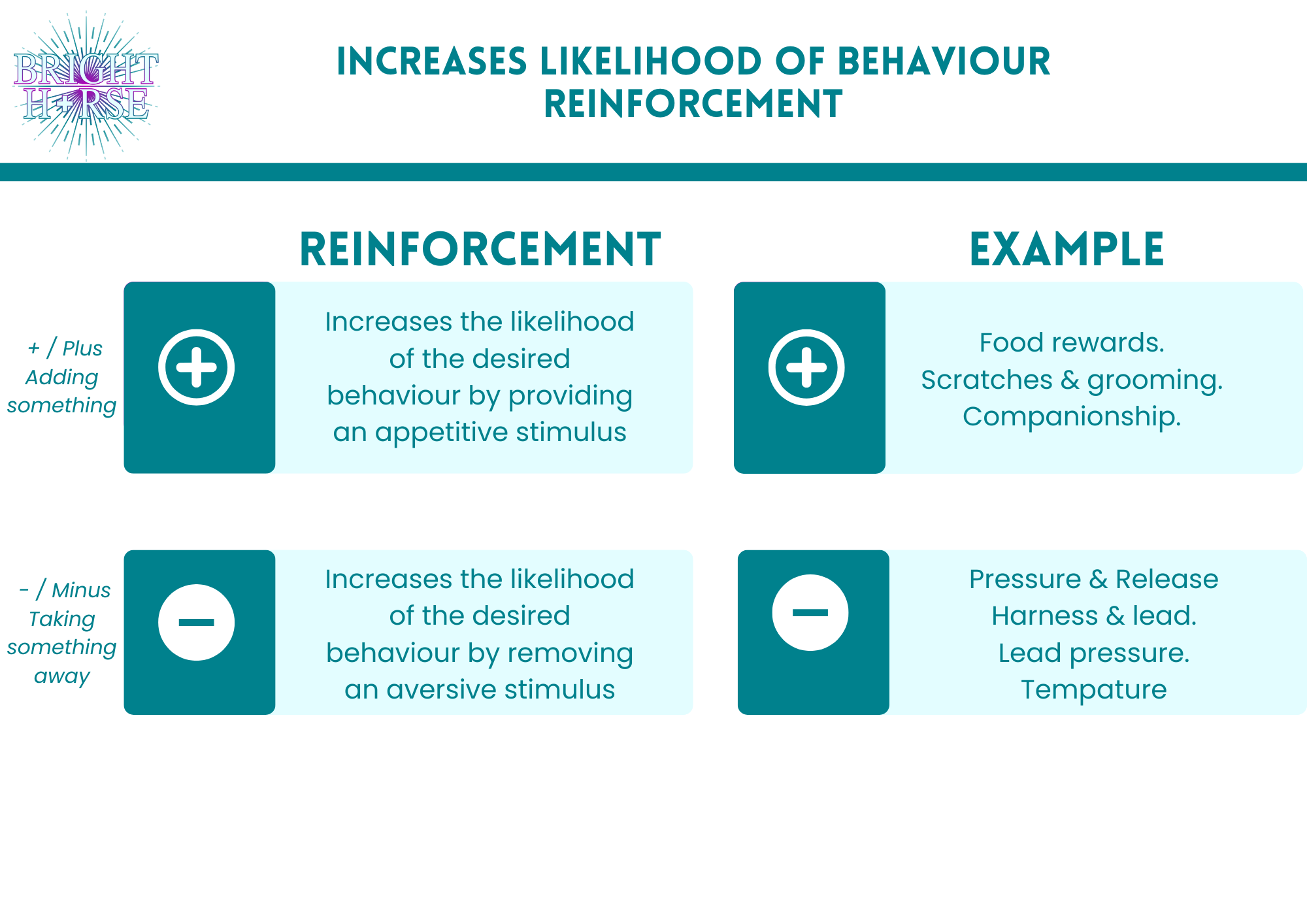
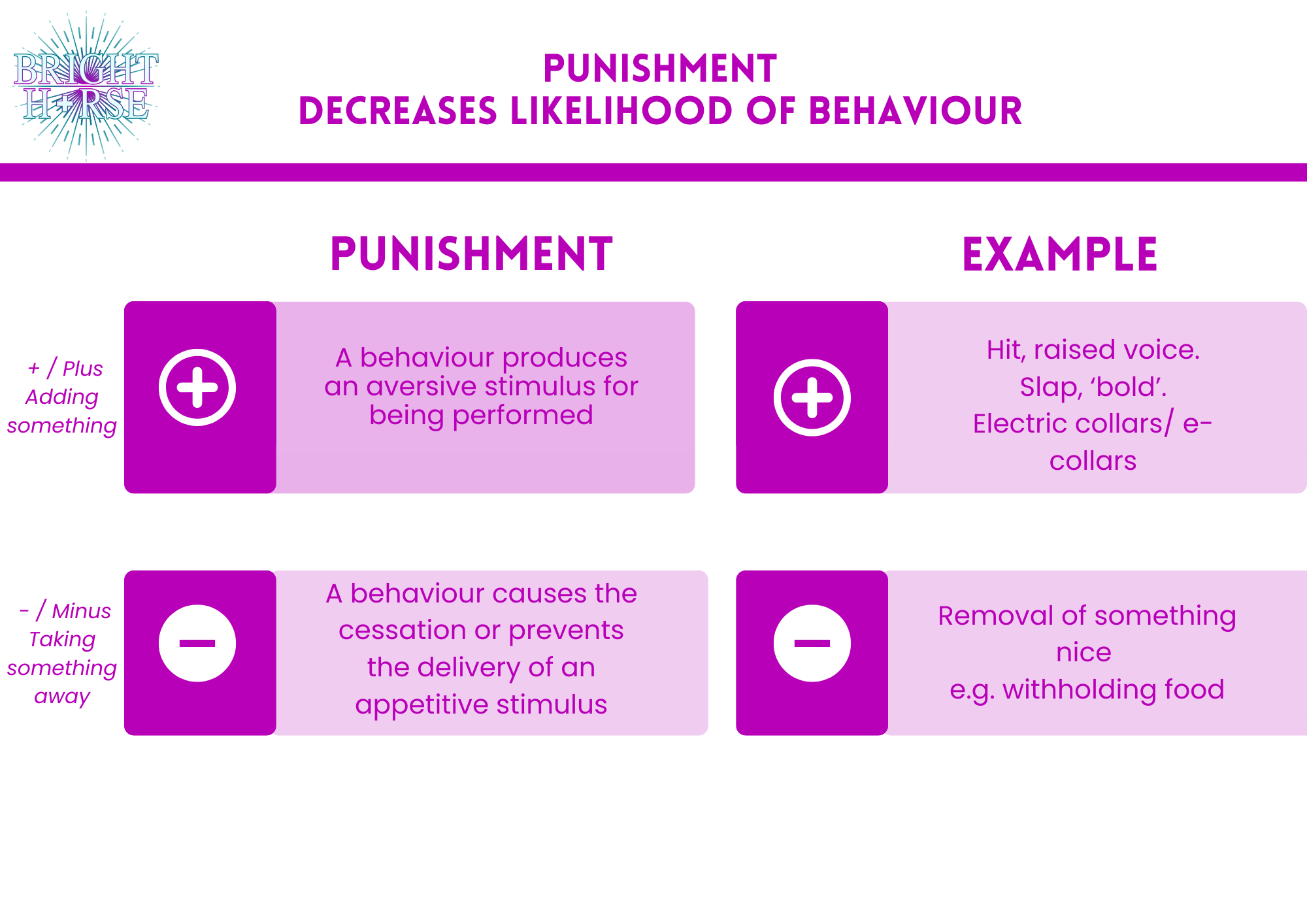
Flag Waving in Action
So what really happens with flag waving? You shake a flag on a stick at the horse. Since horses are prey animals, they move away. This is negative reinforcement, the horse moves, the flag stops, and they learn that moving brings relief. In principle, this isn’t automatically bad, negative reinforcement is common in horse training, like when you apply leg pressure to ask for a walk.
The problem is in the application, most flag waving doesn’t stop when the horse moves(performes the desired behaivour). The handler keeps waving. Now the horse gets punished for moving, this is positive punishment. You’ve switched learning categories midstream, and the horse is left confused. Should they move or not? Either way seems wrong.
Over time, this leads to trouble. Some horses become frantic, moving more and more in panic. Others shut down, giving up because nothing works. Neither outcome is good for welfare, and neither shows real learning.
Down With This Sort of Thing: Flooding, Not Desensitisation
People selling these ideas often call flag waving “desensitisation.” It isn’t.
- Desensitisation is a behaviour modification technique where an animal is gradually and repeatedly exposed to a specific trigger stimulus at a low, controlled intensity to reduce fear, anxiety, or an undesirable emotional response.
- Systematic desensitisation for an animal is a gradual behaviour modification technique used to reduce a fearful or anxious response to a specific stimulus. The goal is to slowly increase the intensity of the exposure over time, pairing it with positive experiences, until the animal learns to react with calm or indifference instead of fear
- Sensitisation is a type of non-associative learning where an animal shows an increasingly intense response to a repeated or strong stimulus.
Flag waving is Sensitisation not desensitisation or even Systematic desensitisation.
Real systematic desensitisation is careful and gradual, where you expose the horse to something slightly scary at a level they can handle, and you pair it with reinforcement (removal of pressure of rewards). Step by step, the horse learns it’s safe. Appraoch treat, retreat and treat is a key example of approaching a scary stimulus, which uses both +R and -R.
Flag waving is actually flooding, overwhelming the horse with the scary thing until they stop reacting. Yes, flooding “works” in the sense that the horse goes still. But this isn’t calmness, it’s the horse shutting down.
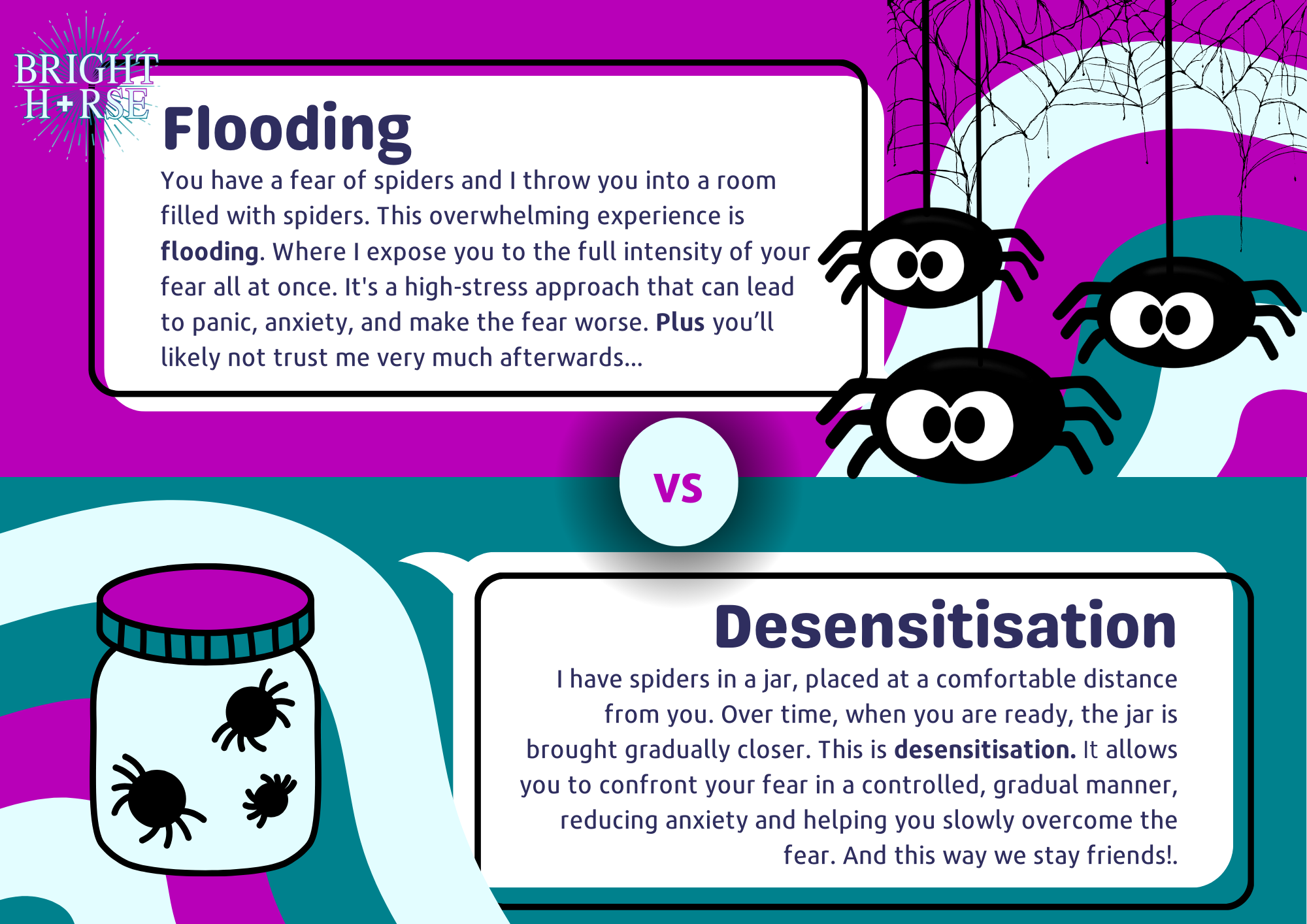
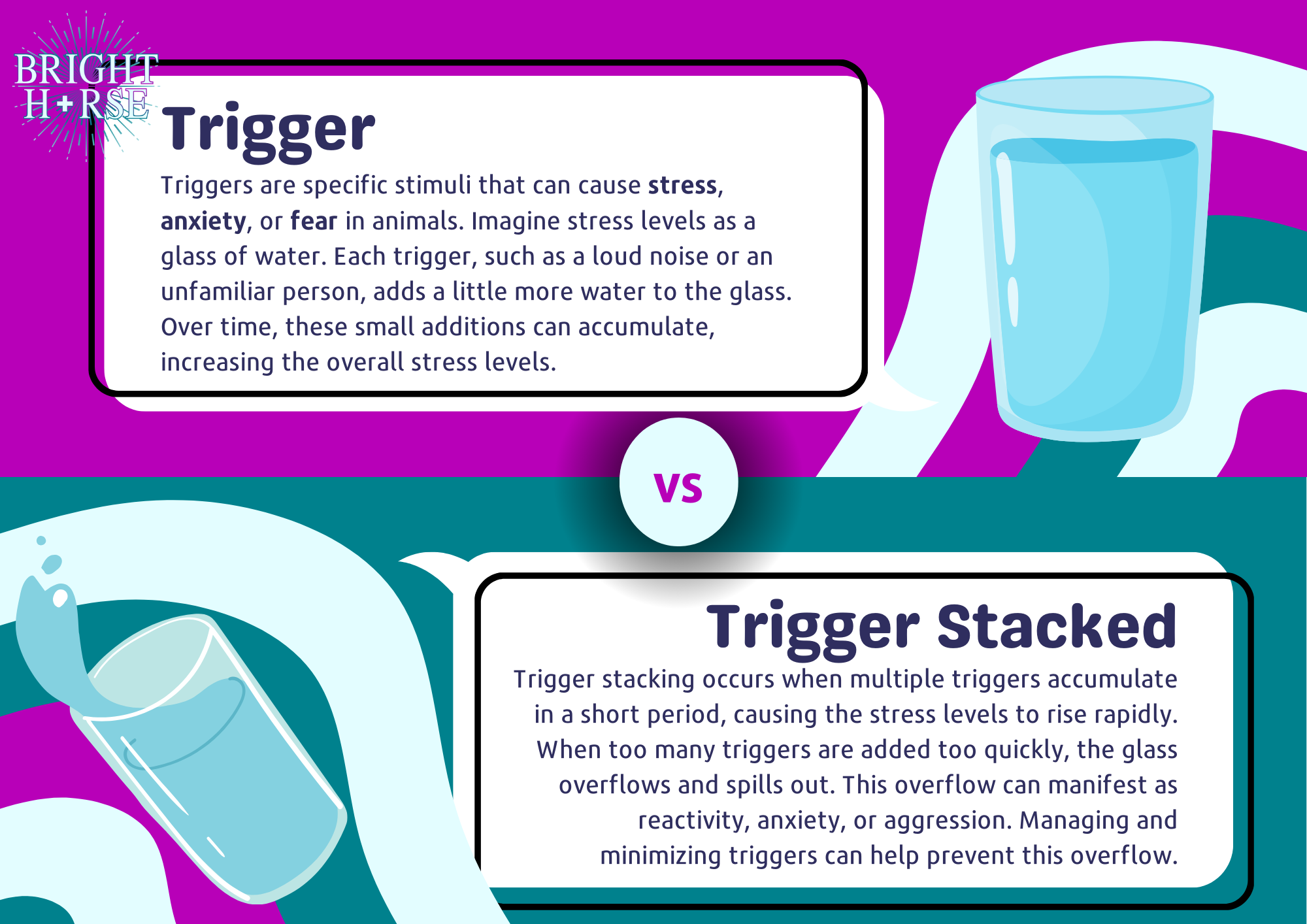
Their ability to learn shrinks, and they may show signs of stress, calming signals, swishing tail, hard stare/fixed gazes, or pawing. To someone who doesn’t know what to look for, it might look like success. Freezing in place is not success. It’s a false economy, the horse hasn’t learned; they’ve just stopped trying.
Careful now: calm doesn’t always mean calm. Sometimes stillness means surrender.
Words vs. Reality
One reason these accounts are so popular is because they say one thing while showing another. The trainer says, “Look, he’s relaxing,” but what I see and other behaviourists see is a stressed horse showing subtle signals of conflict. People hear the words, but don’t read the body language. This is why it’s so important to know what to look for.
Some key calming or conflict signals include: licking and chewing, head turns, pawing, tail swishing, muscle tension, fixed stares, blowing, yawning, and freezing. These are not signs of true relaxation or a calm horse. They are signs the horse is trying to cope with stress. Once you know them, you can’t unsee them, and you can train your eye to see. The polished videos will lose their magic, you notice the tension, and you realise: this isn’t learning. It’s survival.
And from there, you’ll find a better training path for you and your horse.
What Horses Really Need
In the end, packaged “methods” only use half the science and none of the nuance. They might look effective, but they can never be tailored to your horse’s unique needs. Real training takes into account their natural behaviour, health, and learning style/personality. Think of it like going to the doctor. You wouldn’t want a one-size-fits-all prescription for yourself. Why would you accept that for your horse?
A good training plan is flexible, evidence-based, and built around the horse’s welfare. It doesn’t rely on gimmicks or props. It uses all four quadrants when appropriate, along with proper care, enrichment, and medical checks. It helps the horse learn instead of pushing them to give up.
So next time you see a flashy method, a shiny shortcut, or a flag-waving demo, hold up your own sign and say: Down with this sort of thing.
And don’t forget: Careful now. Because when it comes to horse welfare, a little scepticism is not just good, it’s essential.

